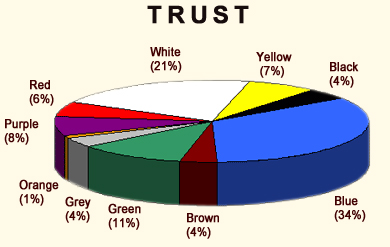Behavioral merchandising is the art and science of using customer behavior to place, promote and display products in order to maximize retail sales revenue. In an online retail context, examples includes using data on where visitors come from, what they search for, what they click on and what they buy, to drive as relevant product promotions to each visitor at every point of interaction as possible.
Example applications include features such as "people who, like you, came here from... searching for... usually ended up buying..." and "customers who bought this item also bought...".
Behavioral merchandising was originally made famous by Amazon.com, but has evolved much further. Today, it is practiced at online retailers everywhere on the globe - companies whose turnover can be anything from $1 million to $1 billion and beyond.
The popularity of behavioral merchandising stems from the fact that it has been proven to be up to 300% more effective than customer segmentation in impacting sales per visitor through raising conversion rates and average order values.
Behavioral merchandising offers a personalized shopping experience for visitors that is highly relevant, trustworthy, and that adapts to changing customer preferences automatically. The automation aspect also means it offers retailers an opportunity to cut costs of manual merchandising, while at the same time achieving better results.
What is merchandising?
"Merchandising means maximizing merchandise sales using product selection, product design, product packaging, product pricing, and product display that stimulates consumers to spend more. This includes disciplines in pricing and discounting, physical presentation of products and displays, and the decisions about which products should be presented to which customers at what time."
An Established Practice
Merchandising is a relatively old practice used by retail stores to increase sales. Some well-known examples of traditional merchandising include placing and promoting - Candy by the check-outs - Children's yogurt at the eye level of children - Milk at the back of the store
Predictably, merchandising has migrated into electronic sales and is today a natural part of every major e-commerce site. As in the traditional sense, electronic merchandising is about maximizing the conversion rate and the average order value through displaying the right products in the right way to the right individuals.
Why Merchandising Matters
We have established that retail merchandising is the art of increasing sales, in other words maximizing sales revenue from a given audience of visitors to a retail outlet. To understand the importance of merchandising, we must also put it in relation to advertising, which is basically the art and process of driving an audience of visitors to the outlet in the first place.
A retail outlet will typically want to spend a given amount of money on advertising to drive as much relevant traffic as possible to the outlet - maximizing the performance metric cost-per-visitor or cost-per-click as it is often referred to.
The retail outlet will then want to practice the best possible merchandising in order to convert this traffic into as many buying customers as possible - maximizing the performance metric conversion rate. To generate as much value out of the traffic generated the retail outlet want to make each visitor to buy as much as possible - maximizing the performance metric average order value.
In short, the success of the retailer's efforts in maximizing cost-per-visitor, conversion rate and average order value will more or less define the sales revenue generated by the outlet. Adding the cost-of-goods-sold margin or average product margin completes the model to define the operating profit that the outlet will generate.
It becomes clear that there are basically four levers that the manager of a retail outlet can pull to try to maximize profits. Unfortunately not all the four levers are under the retailer's control.
The ultimate aim of advertising, merchandising and purchasing combined is to maximize the operating profit of the retailer. Four key performance metrics that define the success of this process - Cost Per Click, Conversion Rate, Average Order Value, and Cost of Goods Sold margin.
But only the Conversion Rate and Average Order Value metrics, which together quantify the success of the merchandising process, are directly under the retailer's control. ' In an online environment much of the traffic is purchased along a CPC-model. CPC is the cost-per click or cost-per-visitor paid to a media company for each visitor driven to the e-commerce site. The CPC-prices are relatively perfectly priced through supply and demand. The retailer must simply pay what the market demands for advertising.
The gross margin for products sold is primarily dependent on the success of the other levers, i.e. on the volume bought by the retailer - so it cannot be pulled independently. This leaves the retailer with two levers that are in his control to maximize: the "conversion rate" and the "average order value". Together they quantify the success of the retailer's merchandising process.
In other words, merchandising offers the two levers for profitability that is uniquely in the control of any given retailer to maximize the revenue in order to deliver better financial results than the competition.
Three Methods Of Merchandising
Electronic merchandising can be divided into three methods: mass-, segmented- and personalized merchandising,
Each of the methods can be found also in "offline" retail merchandising
- Mass merchandising: The approach that by necessity is used in stores, as the store assortment is the same for every visitor.
- Segmented merchandising: The approach typically used by mail order companies, in which separate catalogues are constructed to match the expected interests of a certain user demography (e.g., region, age, gender) or product category.
- Personalized merchandising: Shopping assistants or "personal shoppers" who guide the visitor through the store highlighting and recommending items based on their understanding of the user's profile and needs.
The mass and segmented approaches are typically top-down approaches; one or a small group of people (employees of the retailer) creates and manually administrates the merchandising.
Personalized merchandising is almost inherently a bottom-up approach as it is impossible or exceedingly expensive for the retailer to manually create personalization for each and every customer or product. Bottom-up meaning a web 2.0-like approach, in which all visitors contribute to the merchandising either explicitly (by submitting ratings, reviews, listings etc) or implicitly (by the data they provide through their actions taken on the site)
Explicit contributions are typically made intentionally by a smaller sub-set of all visitors - according to usability expert Jakob Nielsen, as little as 1 out of every 100 users on a typical social site. All visitors, on the other hand, inherently make implicit contributions - intentionally or not. Combined, these user generated contributions can be mined as a collective and form the basis for behavioral merchandising. ' What is behavioral merchandising?
Personalized Merchandising
Behavioral merchandising ("BEM") means using customer contributed behavioral data to automatically achieve a credible and efficient merchandising. BEM was made famous through Amazon's implementation of "those who bought this also bought", but has evolved to be much more than that. One might call BEM the combination or intersection of retail merchandising and social networks. In effect, BEM in an online retail context means turning an e-commerce site into a social network focused on creating a pleasant, socially interactive and interesting personal shopping experience for visitors.
As mentioned previously, there are two types of BEM; implicit and explicit. With implicit BEM the actions that are taken by customers - click patterns, searches done, products purchased - are analyzed and used to create the merchandising. Explicit BEM is when customers explicitly say something about a product, for example submitting a review or recommending a product to a friend.
Implicit
- Those who bought this also
- Recommendations based on the product currently being viewed.
- Based on all your previous interactions with us, our community of users thinks you're looking for...
- Recommendations to an individual customer.
- Based on the contents of your shopping cart, our community of users thinks you might want to add one of the following items...
- Recommendations based on the content of the basket.
- Based on the way you've navigated our site so far, our community of users thinks you're looking for...
- Recommendations based on clicks made on a site.
- Those who searched for... selected....
- Recommended search results.
- Those like you who came here from... searching for... usually ended up buying...
- Adaptive landing pages based on the search phrase used on an external search engine such as Google, which site a visitor arrived from, and visitor data such as browser, operating system and language.
Explicit - Ratings & reviews - Share this product with a friend, e.g., by email, link or to a social network - Customer-created product lists
Social Network Service "A social network service uses software to build online social networks for communities of people who share interests and activities or who are interested in exploring the interests and activities of others." Source: Wikipedia
The Value Of Behavioral Merchandising
The ultimate rationale for BEM lies of course in the superior contribution to financial success that it brings to retailers in comparison to the other available approaches to merchandising. Studies have shown that measured as revenue-per-visitor (i.e., the combined contribution to conversion rate and average order value) the contribution of BEM is up to 300% greater than the contribution that a segmented merchandising approach will give.
The primary explanations to the superior results delivered by BEM lies primarily in that BEM is:
- Relevant: Because all customers combined are always more likely to collectively possess greater knowledge about all products as well as the way they are purchased and consumed than a limited team of professional merchandisers. BEM gives each individual visitor a more personally relevant shopping experience, helping each one to find precisely the products or promotions that is most relevant to them in each given situation.
Personalized merchandising using behavioral methods has proven by far the most effective In studies conducted by Avail at customers, behavioral merchandising has generated up to 300% better results than segmented merchandising by being more relevant, trustworthy and adaptive.
- Trustworthy: BEM is ultimately generated by peer consumers, as opposed to by marketing professionals which is the case in all other approaches, and thus creates trust. Research clearly shows that consumers are much more likely to trust peers than professional marketers, in particular online.
- Adaptive: Because BEM can be made to take into account the collective behavior of all visitors in real-time, it can respond to quickly changing - and sometimes fickle - preferences of visitors and consumers and it can apply that response in real-time from one interaction to another by the same visitor during a visit to the outlet.
Apart from the superior contribution to revenue-per-visitor, BEM has several other advantages over other approaches, including the fact that it can be made highly or completely automated, requiring no on-going human administration or maintenance and so reducing the cost of merchandising operations, even for very large product ranges and very large groups of visitors.






























